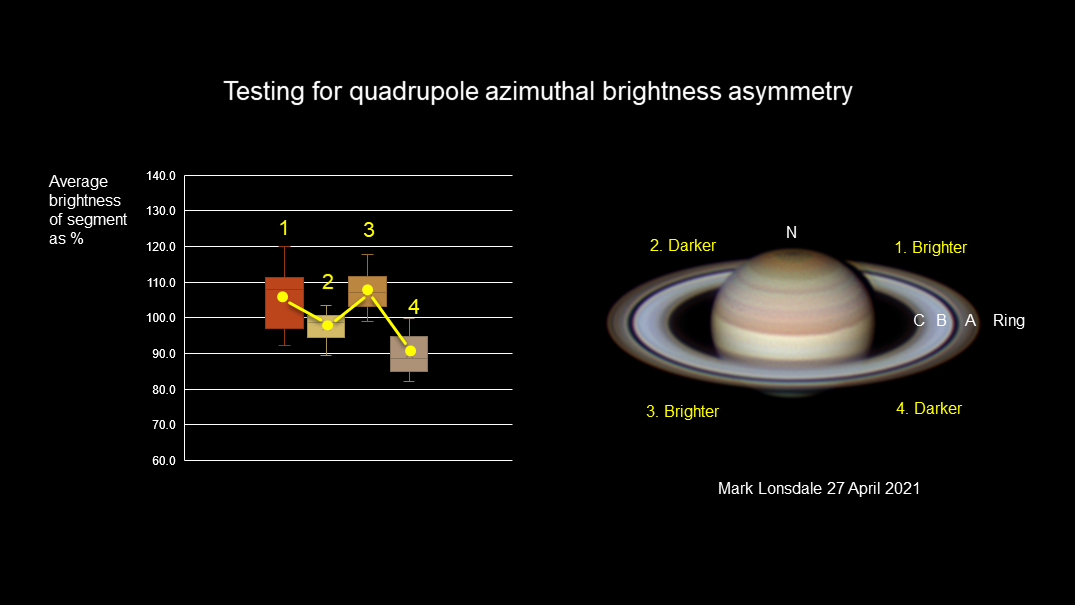Last year I measured the Seeliger Effect on Saturn's rings (the sudden brightening of the rings at opposition).
In this month's Australian edition of Sky and Telescope (Jul/Aug 2021; pp 50-51), there is an article by Thomas A. Dobbins on other ring phenomena, notably the "quadrupole azimuthal brightness asymmetry" in Saturn's A Ring. This involves a perceived variation in brightness as you move around the ring (see image of Saturn below). It was first noted by Carmichel in 1958 and subsequently was studied by the Hubble, Voyager and Cassini projects. It is thought to be due to ring particles leaving trailing wakes whose brightness depends on viewing angle.
I must admit I had never noticed this, even now it has been pointed out ( I could honestly not detect it in the image accompanying the article!), so I thought I would analyse some of my Saturn images where the rings were especially full, a total of 14 images from 2018, '19 and '20, to see if measurements would detect what my eye could not.
I used ImageJ software to measure the brightness (i.e. mean grey value) at four selected stations 90 degrees apart on the A ring on each image (refer to Saturn image below), and expressed the brightness as a percentage of the average of the four measurements for the image.
In the graph below are the results expressed as box and whisker plots to show the variance, together with a line graph connecting the overall means for each station on the A Ring.
You can see that the brightness does go up and down as predicted as you move round the four stations on the ring. The variation between stations is not great, however, so it is perhaps not surprising that it is not obvious to the naked eye. There is a lot of variation between images in the strength of the effect too.


